Defining Breast Tumor Location Using a Four-Element Wearable Circular UWB MIMO Antenna Array
Abstract
1. Introduction
2. The Proposed Antenna Design
2.1. Antenna Elements
2.2. Effect of Antenna Bending
3. The Proposed Detection System
3.1. Breast Phantom
3.2. Antenna Array Setup
4. Results and Discussion
4.1. Tumor Detection Results
4.2. SAR Results
4.3. Diversity Performance
5. Conclusions
Author Contributions
Funding
Institutional Review Board Statement
Informed Consent Statement
Data Availability Statement
Conflicts of Interest
References
- World Health Organization. WHO Report on Cancer: Setting Priorities, Investing Wisely and Providing Care for All; World Health Organization: Geneva, Switzerland, 2020.
- DeSantis, C.; Ma, J.; Gaudet, M.M.; Newman, L.A.; Miller, K.D.; Goding Sauer, A.; Jemal, A.; Siegel, R.L. Breast cancer statistics. CA Cancer J. Clin. 2019, 69, 438–451. [Google Scholar] [CrossRef] [PubMed]
- Narod, S.A. Tumour size predicts long-term survival among women with lymph node-positive breast cancer. Curr. Oncol. 2012, 19, 249–253. [Google Scholar] [CrossRef] [PubMed]
- Miller, A.B.; Wall, C.; Baines, C.J.; Sun, P.; To, T.; Narod, S.A. Twenty five year follow-up for breast cancer incidence and mortality of the Canadian National Breast Screening Study: Randomised screening trial. BMJ 2014, 348, g366. [Google Scholar] [CrossRef]
- El Misilmani, H.M.; Naous, T.; Al Khatib, S.K.; Kabalan, K.Y. A Survey on Antenna Designs for Breast Cancer Detection Using Microwave Imaging. IEEE Access 2020, 8, 102570–102594. [Google Scholar] [CrossRef]
- Bahrami, H.; Porter, E.; Santorelli, A.; Gosselin, B.; Popovic, M.; Rusch, L.A. Flexible Sixteen Monopole Antenna Array for Microwave Breast Cancer Detection. In Proceedings of the 36th Annual International Conference of the IEEE Engineering in Medicine and Biology Society, Chicago, IL, USA, 26–30 August 2014; pp. 3775–3778. [Google Scholar]
- Bahramiabarghouei, H.; Porter, E.; Santorelli, A.; Gosselin, B.; Popovic, M.; Rusch, L.A. Flexible 16 Antenna Array for Microwave Breast Cancer Detection. IEEE Trans. Biomed. Eng. 2015, 62, 2516–2525. [Google Scholar] [CrossRef]
- Porter, E.; Bahrami, H.; Santorelli, A.; Gosselin, B.; Rusch, L.A.; Popovic, M. A Wearable Microwave Antenna Array for Time-Domain Breast Tumor Screening. IEEE Trans. Med Imaging 2016, 35, 1501–1509. [Google Scholar] [CrossRef]
- Rashid, M.U.M.; Rahman, A.; Paul, L.C.; Rafa, J.; Podder, B.; Sarkar, A.K. Breast Cancer Detection & Tumor Localization Using Four Flexible Microstrip patch antennas. In Proceedings of the International Conference on Computer, Communication, Chemical, Materials, and Electronic Engineering (IC4ME2), Rajshahi, Bangladesh, 11–12 July 2019. [Google Scholar]
- Fawzy, A.; Cetin, K. Wearable Microstrip Patch Ultra-Wide Band Antenna for Breast Cancer Detection. In Proceedings of the 41st International Conference on Telecommunications and Signal Processing (TSP), Athens, Greece, 4–6 July 2018. [Google Scholar]
- Afyf, A.; Bellarbi, L.; Achour, A.; Yaakoubi, N.; Errachid, A.; Sennouni, M.A. UWB Thin Film Flexible Antenna for Microwave Thermography for Breast Cancer. In Proceedings of the International Conference on Electrical and Information Technologies (ICEIT), Tangiers, Morocco, 4–7 May 2016. [Google Scholar]
- Afyf, A.; Elouerghi, A.; Afyf, M.; Sennouni, M.A.; Bellarbi, L. Flexible Wearable Antenna for Body Centric Wireless Communication in S-Band. In Proceedings of the International Conference on Electrical and Information Technologies (ICEIT), Rabat, Morocco, 4–7 March 2020. [Google Scholar]
- El Vadel, L.A.; Konditi, D.B.; Mbango, F.M. A Miniaturized Antenna for Breast Cancer Detection at the 5.72–5.82 GHz ISM Band Based on the DGS Technique. Prog. Electromagn. Res. B 2023, 98, 87–105. [Google Scholar] [CrossRef]
- Alsaidosh, Y.; Fiebich, M.; Mohammed, H.; Haji, A. Early detection of breast cancer using microwave imaging. Proc. Autom. Med. Eng. 2023, 2, 761. [Google Scholar]
- Elsheakh, D.M.; Alsherif, S.A.; Eldamak, A.R. Textile monopole sensors for breast cancer detection. Telecommun. Syst. 2023, 82, 363–379. [Google Scholar] [CrossRef]
- Çalışkan, R.; Sinan Gültekin, S.; Uzer, D.; Dündar, Ö. A microstrip patch antenna design for breast cancer detection. Procedia-Soc. Behav. Sci. 2015, 195, 2905–2911. [Google Scholar] [CrossRef]
- Wang, L. Microwave Sensors for Breast Cancer Detection. Sensors 2018, 18, 655. [Google Scholar] [CrossRef] [PubMed]
- Wang, X.; Yang, L.T.; Meng, D.; Dong, M.; Ota, K.; Wang, H. Multi-UAV Cooperative Localization for Marine Targets Based on Weighted Subspace Fitting in SAGIN Environment. IEEE Internet Things J. 2022, 9, 5708–5718. [Google Scholar] [CrossRef]
- Abbosh, A.M.; Kan, H.K.; Bialkowski, M.E. Compact ultra-wideband planar tapered slot antenna for use in a microwave imaging system. Microw. Opt. Technol. Lett. 2006, 48, 2212–2216. [Google Scholar] [CrossRef]
- Abbosh, A.M. Directive Antenna for Ultrawideband Medical Imaging Systems. Int. J. Antennas Propag. 2008, 2008, 854012. [Google Scholar] [CrossRef]
- Pozar, D.M. Microwave Engineering, 4th ed.; John Wiley & Sons: New York, NY, USA, 2011. [Google Scholar]
- Chen, S.J.; Chivers, B.; Shepherd, R.; Fumeaux, C. Bending Impact on A Flexible Ultra-Wideband Conductive Polymer Antenna. In Proceedings of the International Conference on Electromagnetics in Advanced Applications (ICEAA), Turin, Italy, 7–11 September 2015. [Google Scholar]
- Wen, F.; Shi, J.; Gui, G.; Gacanin, H.; Dobre, O.A. 3-D Positioning Method for Anonymous UAV Based on Bistatic Polarized MIMO Radar. IEEE Internet Things J. 2023, 10, 815–827. [Google Scholar] [CrossRef]
- Tayel, M.B.; Abouelnaga, T.G.; Badran, N.M. Localization of Breast Tumor Using Four Elements UWB Wearable Antenna. Appl. Comput. Electromagn. Soc. J. 2022, 37, 1021–1030. [Google Scholar] [CrossRef]
- Fiedler, T.M.; Ladd, M.E.; Bitz, A.K. SAR Simulations & Safety. Neuroimage 2017, 168, 33–58. [Google Scholar]
- Abdel-Haleem, M.R.; Abouelnaga, T.; Abo-Zahhad, M.; Ahmed, S.M. Enhancing microwave breast cancer hyperthermia therapy efficiency utilizing fat grafting with horn antenna. Int. J. RF Microw. Comput. Aided Eng. 2021, 31, e22651. [Google Scholar] [CrossRef]
- Nguyen, P.T.; Abbosh, A.M.; Crozier, S. Thermo-Dielectric Breast Phantom for Experimental Studies of Microwave Hyperthermia. IEEE Antennas Wirel. Propag. Lett. 2015, 15, 476–479. [Google Scholar] [CrossRef]
- IEC/IEEE 62704-2:2017; Determining the Peak Spatial-Average Specific Absorption Rate (SAR) in the Human Body from Wireless Communications Devices, 30 MHz to 6 GHz—Part 1: General Requirements for Using the Finite-Difference Time-Domain (FDTD) Method for SAR Calculations. IEC: Geneva, Switzerland, 2017.
- Abouelnaga, T.G.; Zewail, I.; Shokair, M. Design of 10 × 10 Massive MIMO Array in Sub-6GHz Smart Phone for 5G Applications. Prog. Electromagn. Res. B 2021, 91, 97–114. [Google Scholar] [CrossRef]
- Zaki, A.Z.; Hamad, E.K.; Abouelnaga, T.G.; Elsadek, H.A. Design of ultra-compact ISM band implantable patch antenna for biomedical applications. Int. J. Microw. Wirel. Technol. 2022, 14, 1279–1288. [Google Scholar] [CrossRef]
- Altaf, A.; Iqbal, A.; Smida, A.; Smida, J.; Althuwayb, A.A.; Hassan Kiani, S.; Alibakhshikenari, M.; Falcone, F.; Limiti, E. Isolation Improvement in UWB-MIMO Antenna System Using Slotted Stub. Electronics 2020, 9, 1582. [Google Scholar] [CrossRef]
- Abouelnaga, T.; Abdallah, E. Isolation Enhancement of UWB MIMO rDRA for 5G Outdoor Applications. Int. J. Commun. Antenna Propag. 2022, 12, 302. [Google Scholar] [CrossRef]
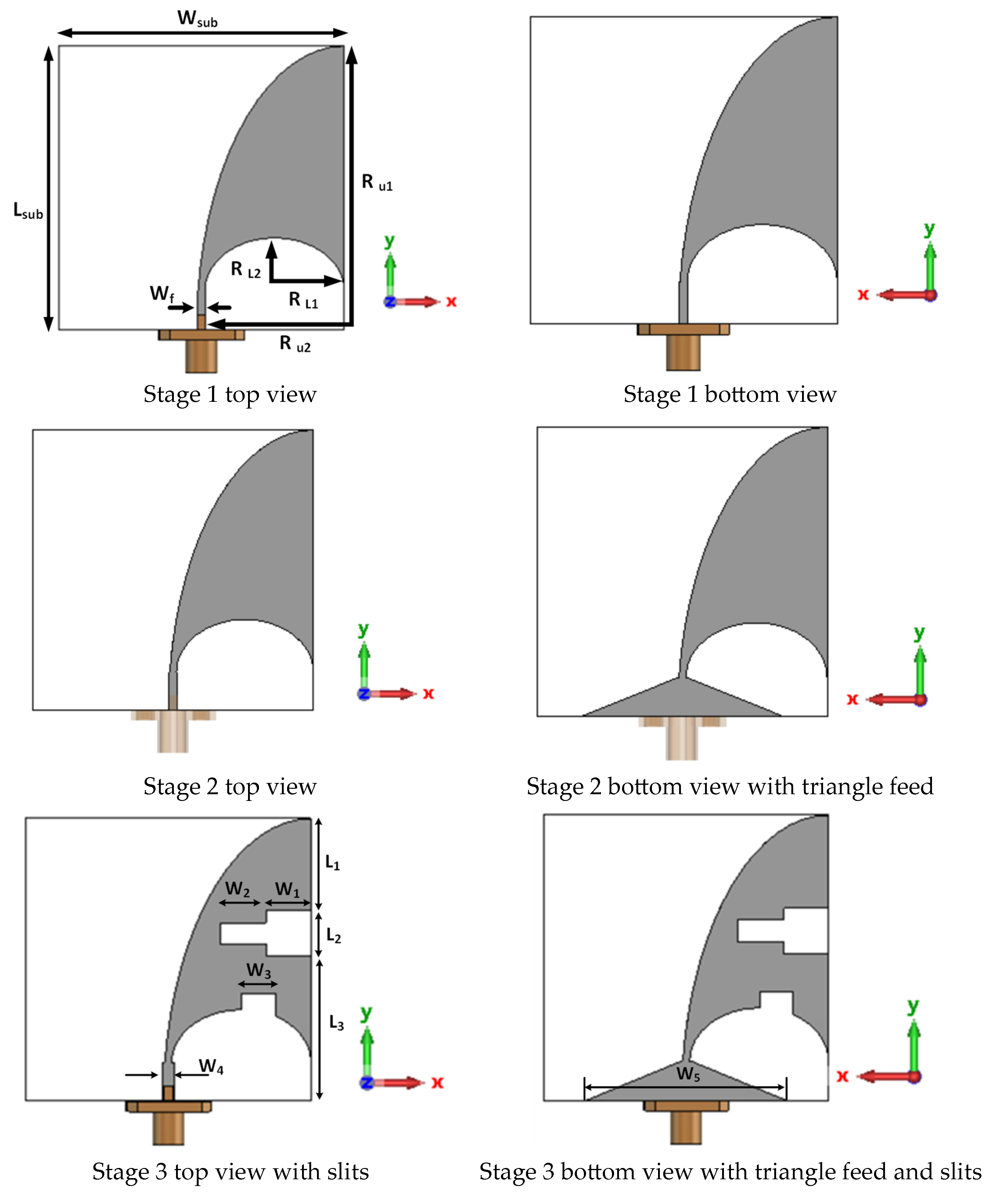
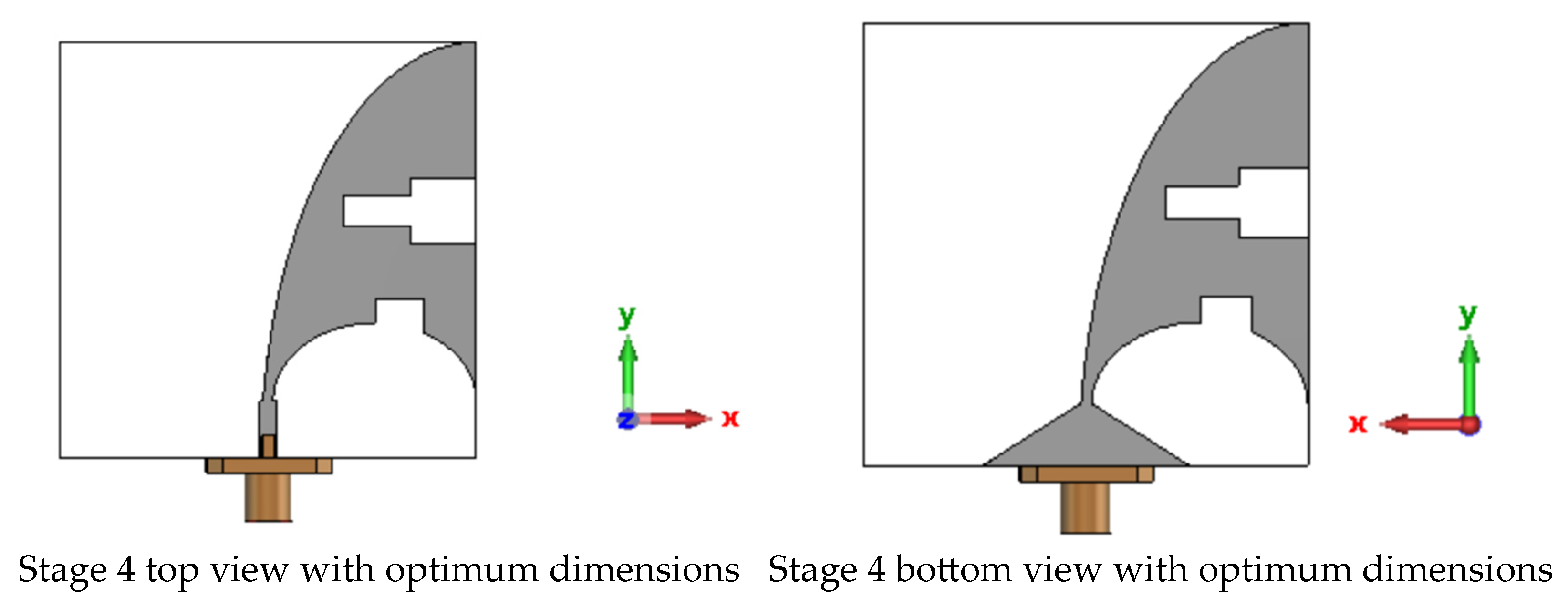

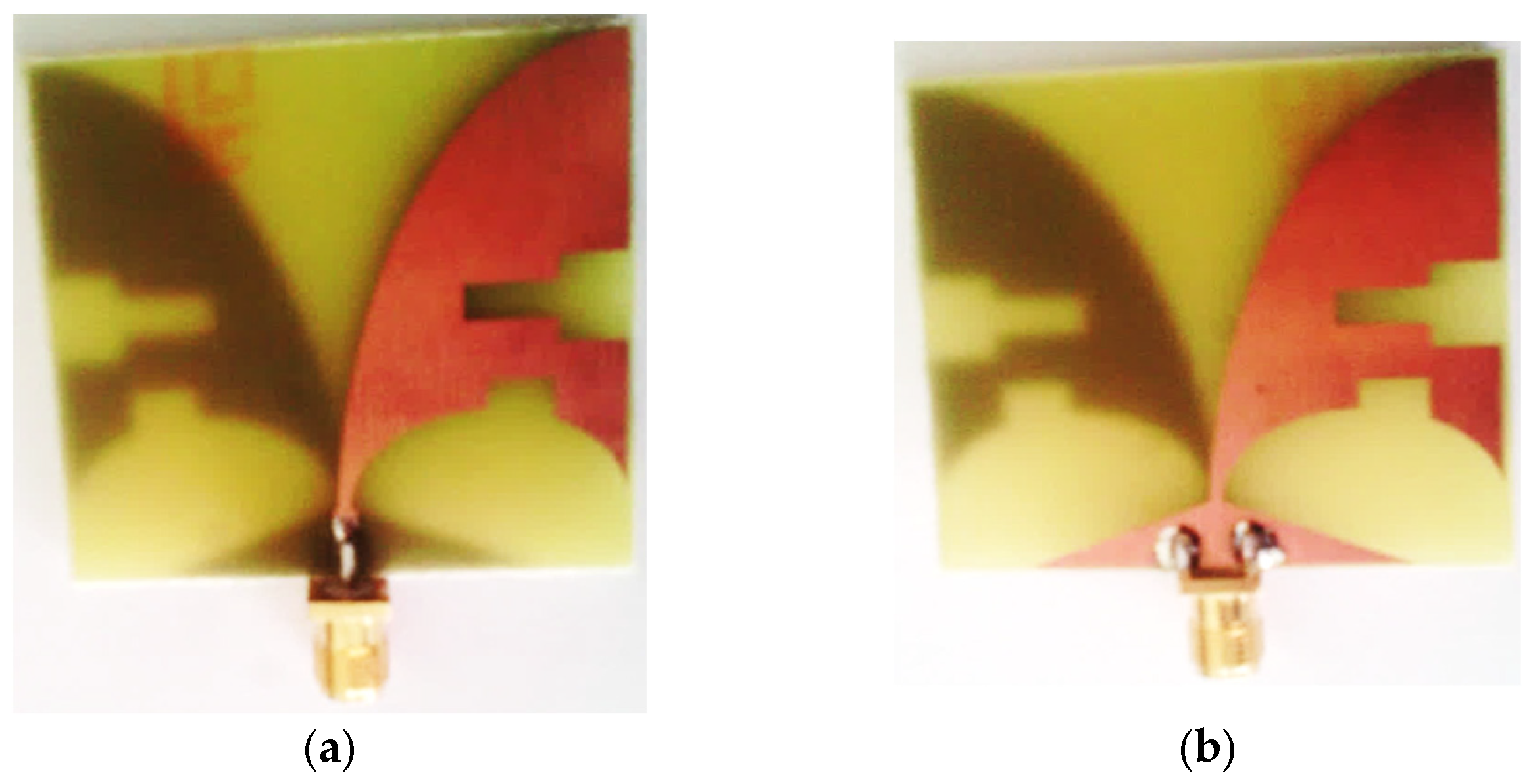
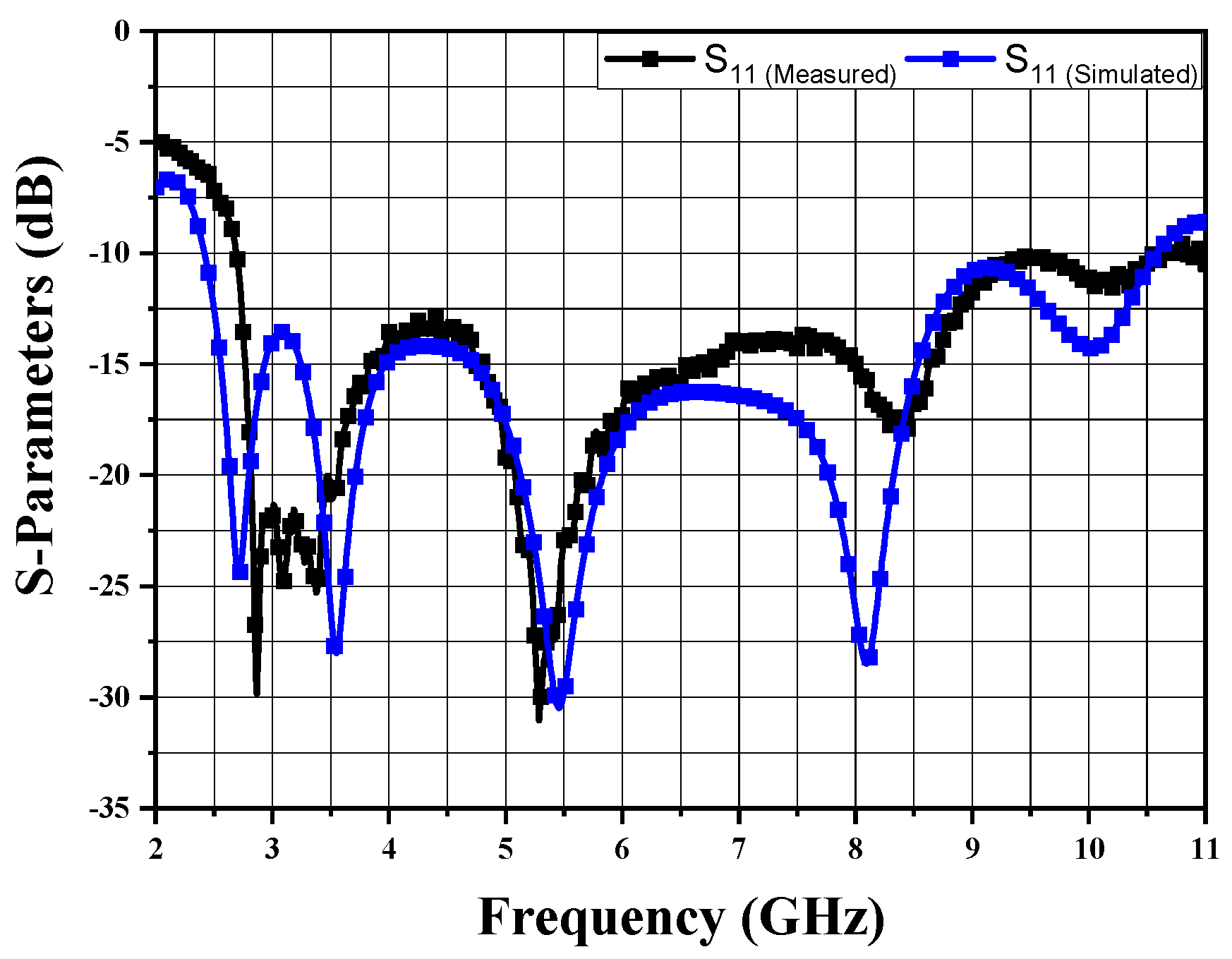
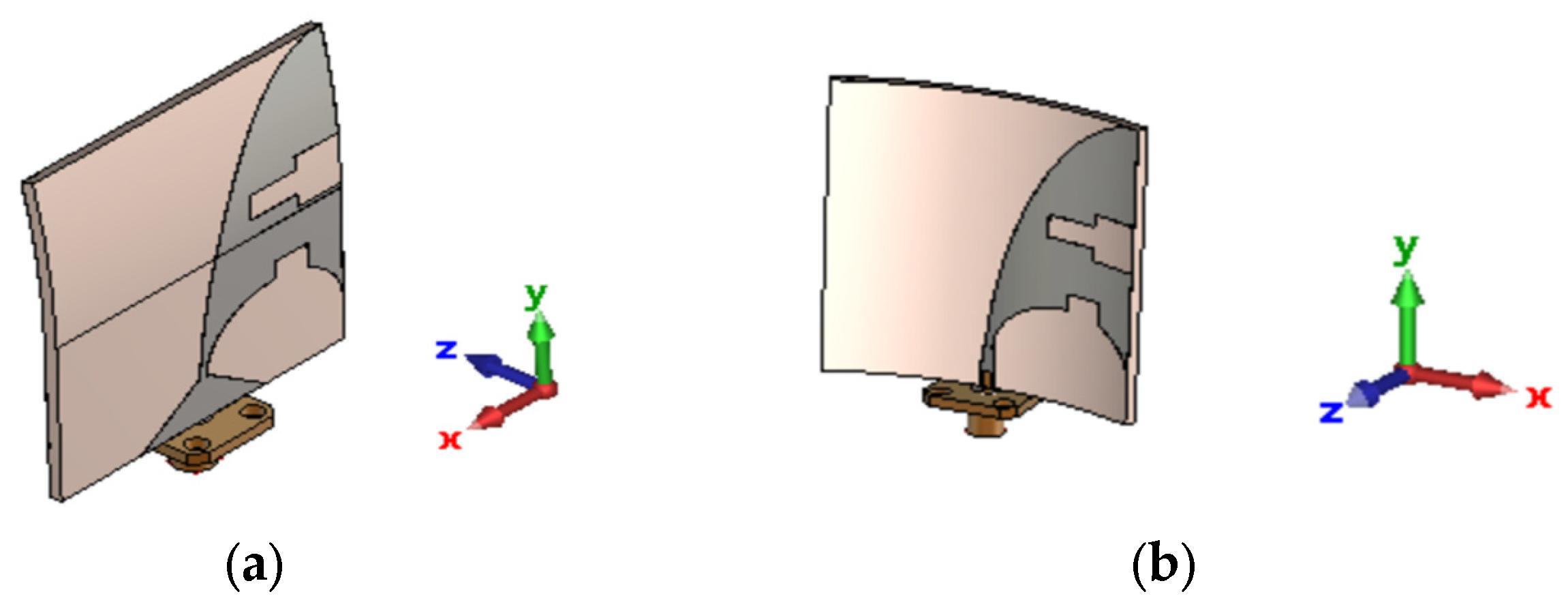
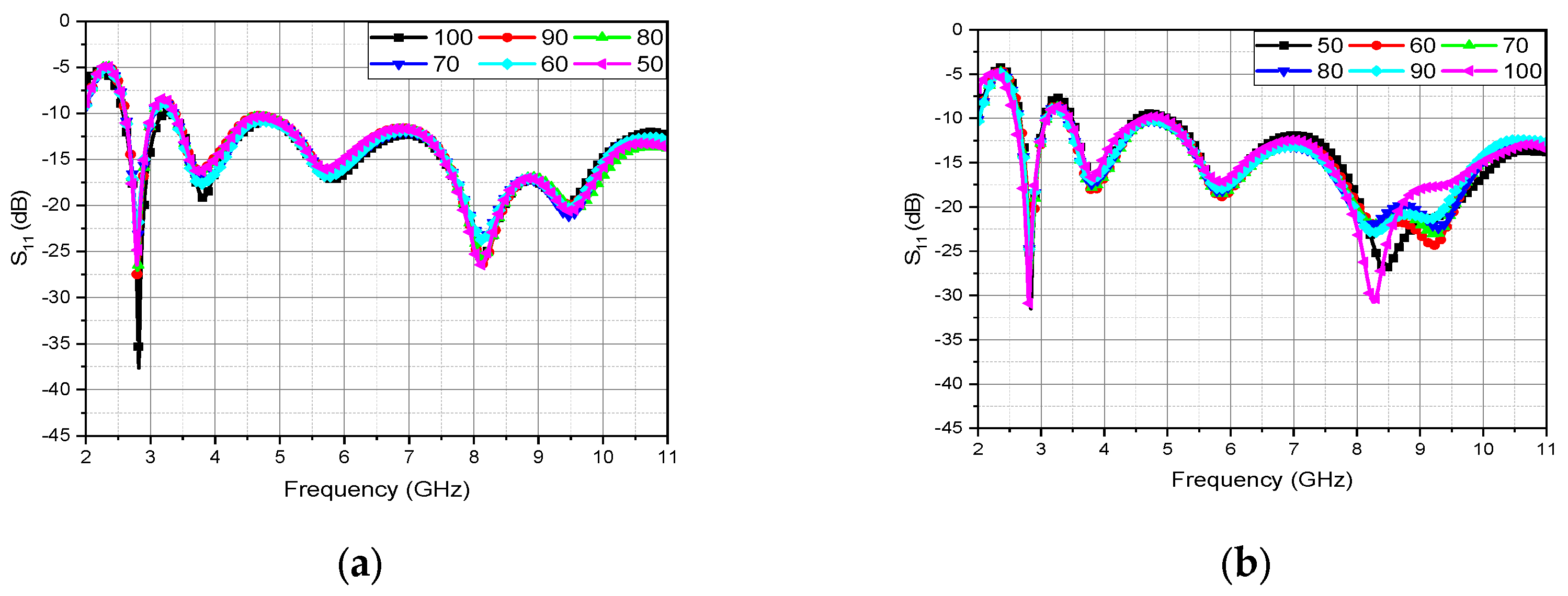
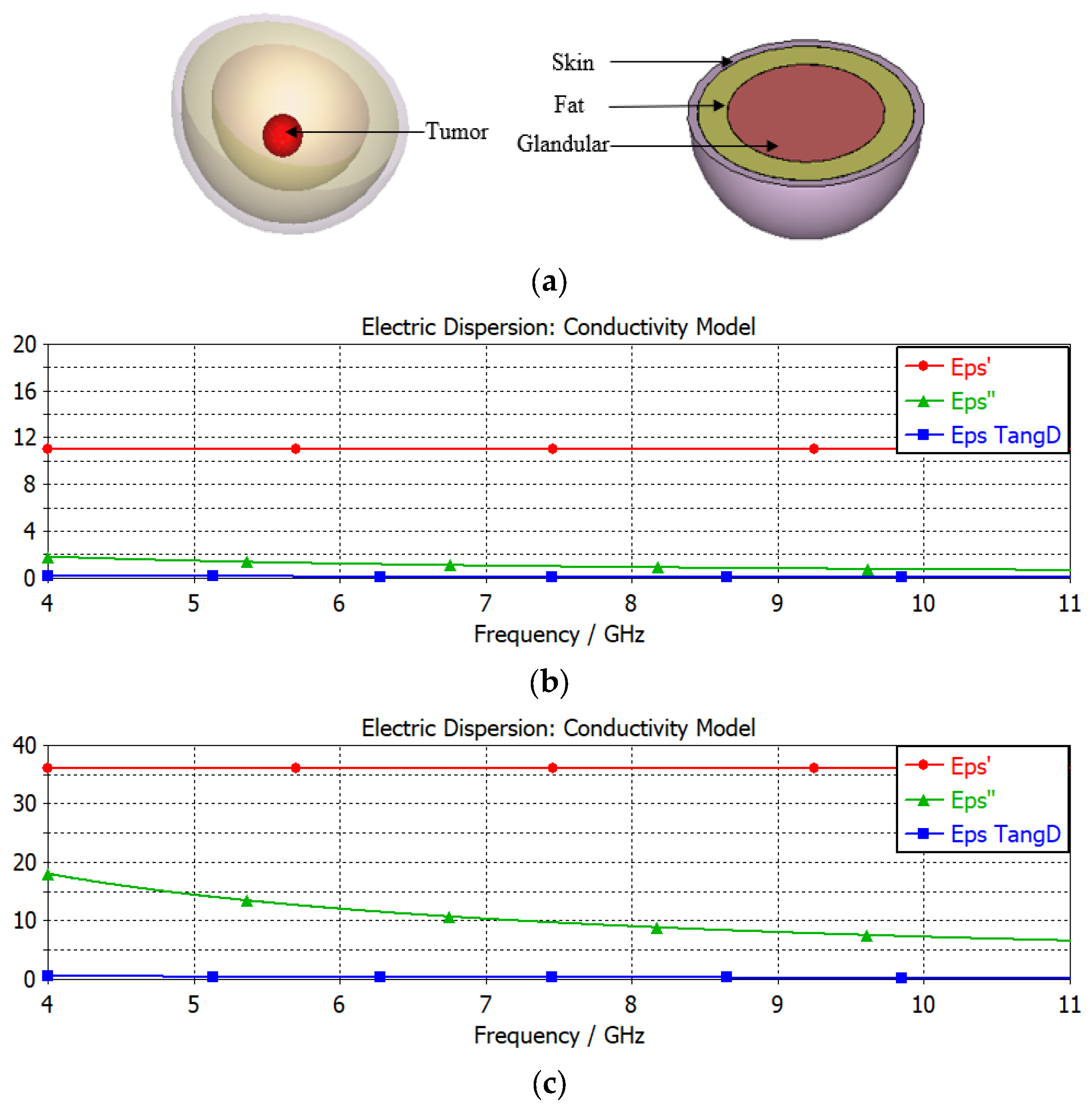
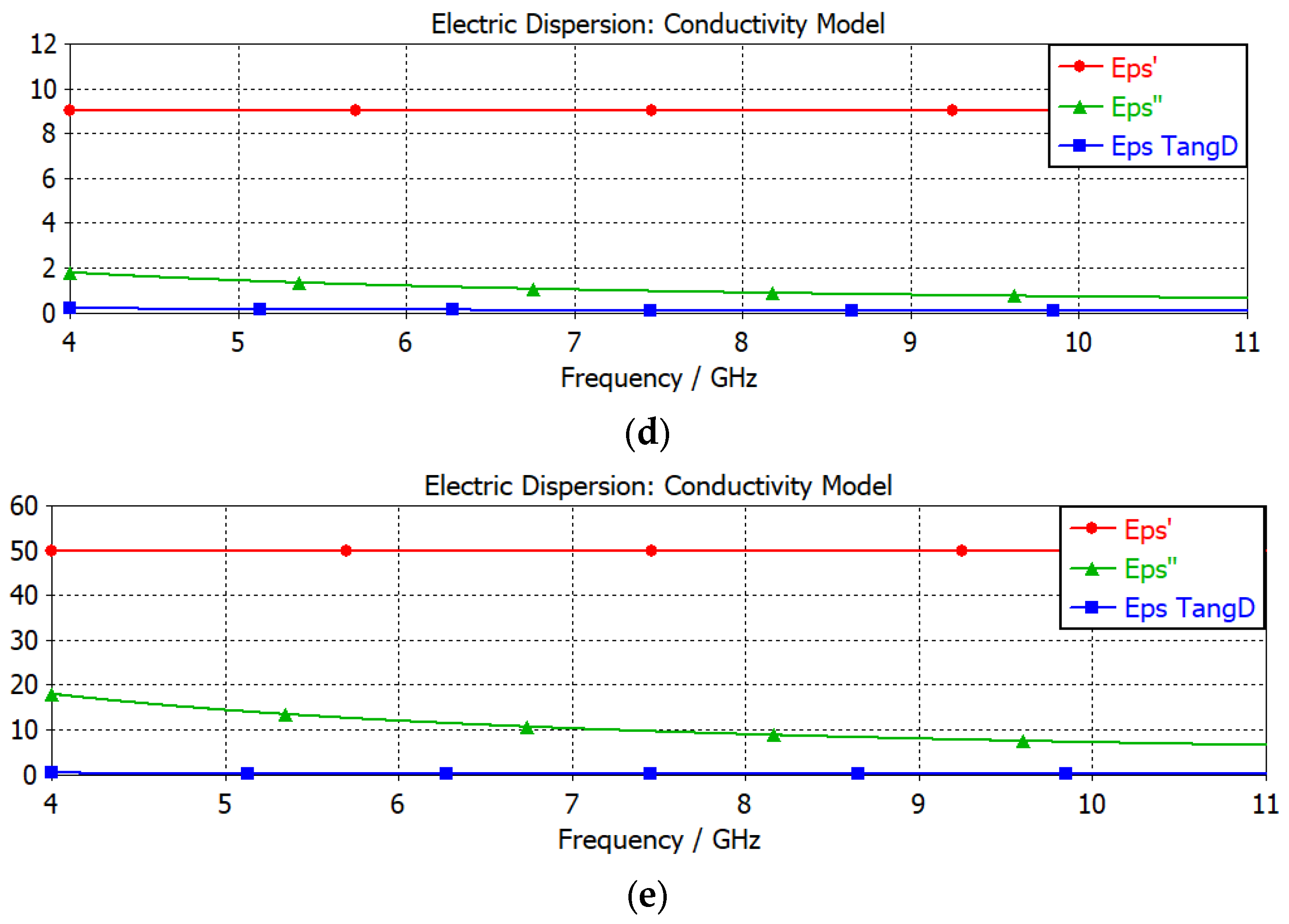
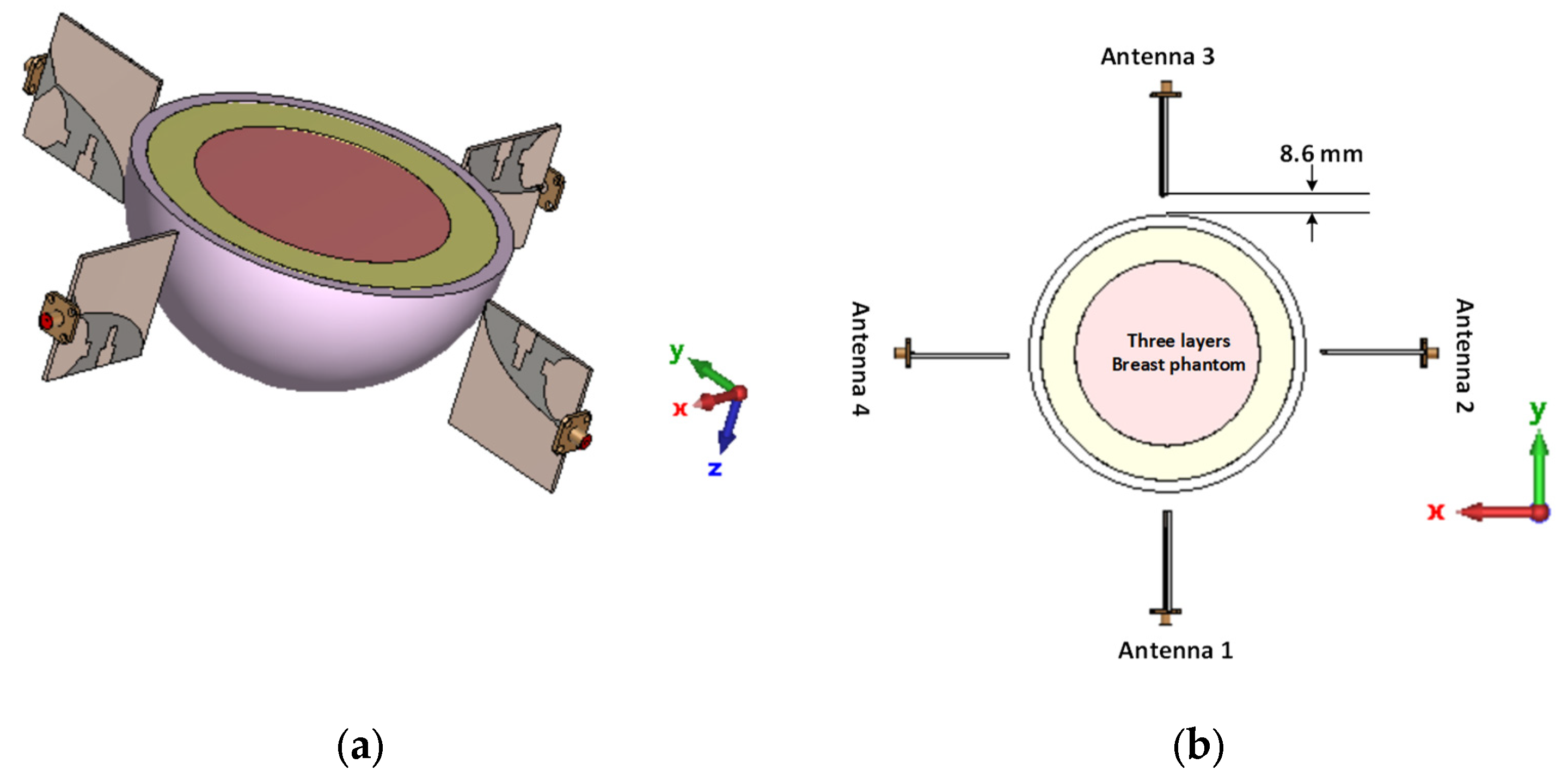
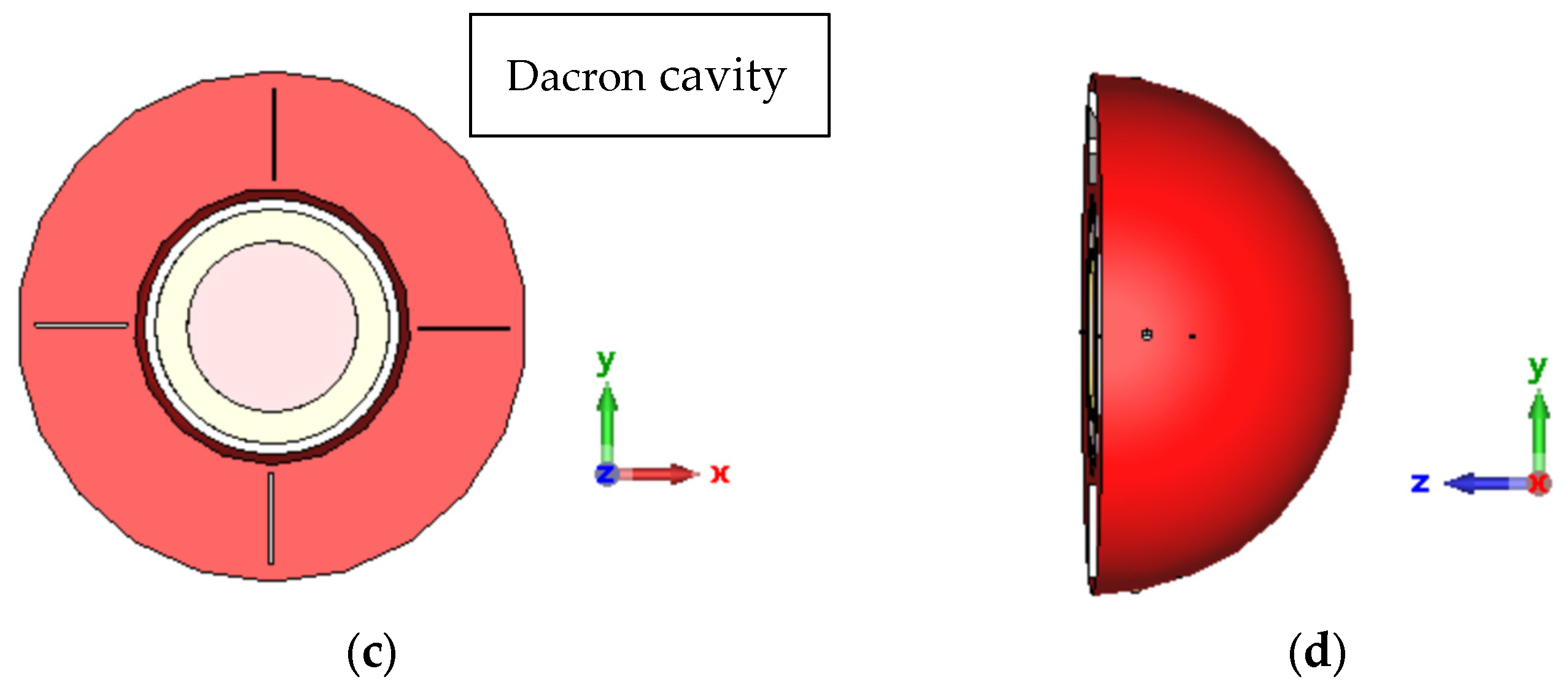
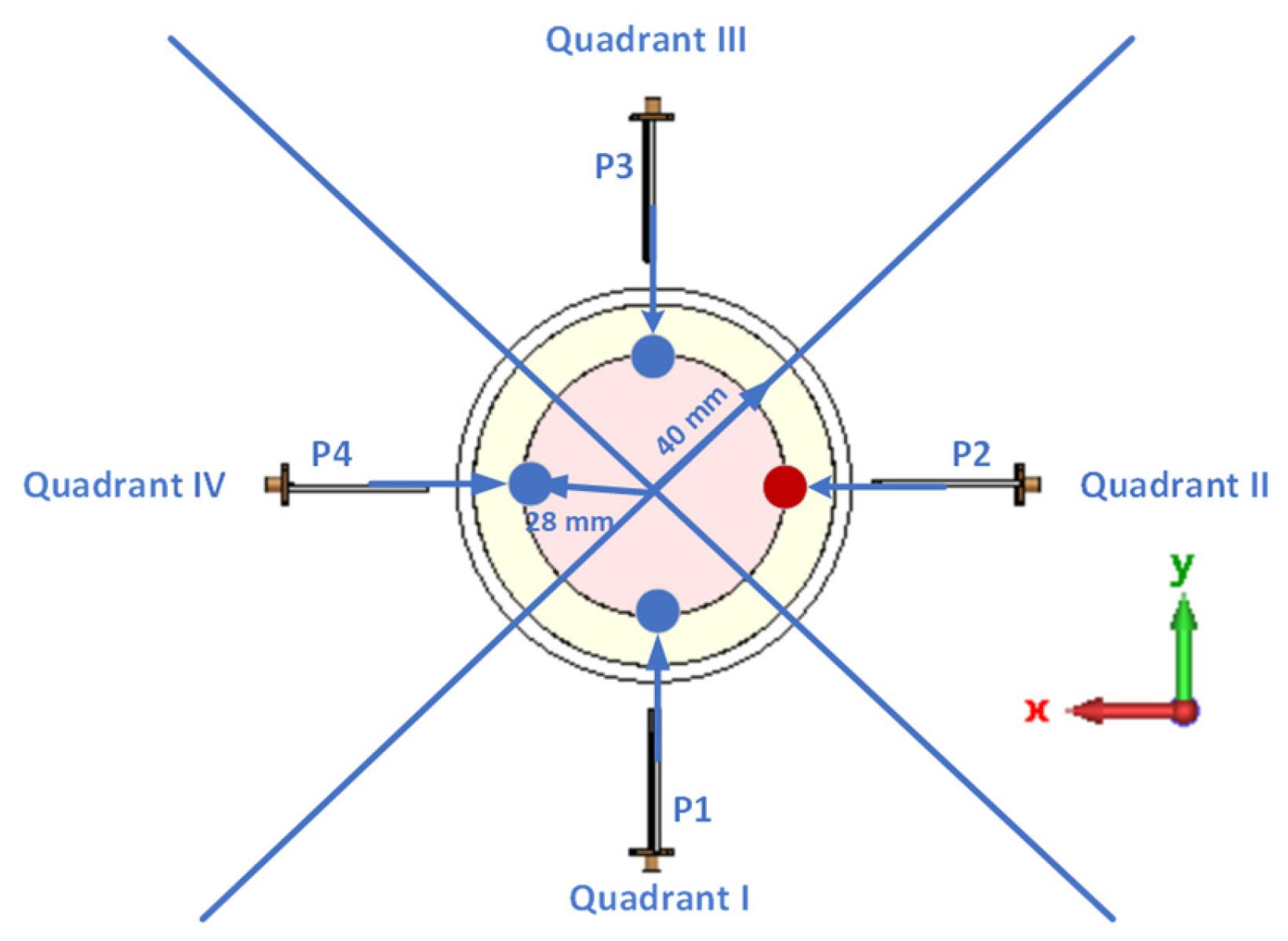
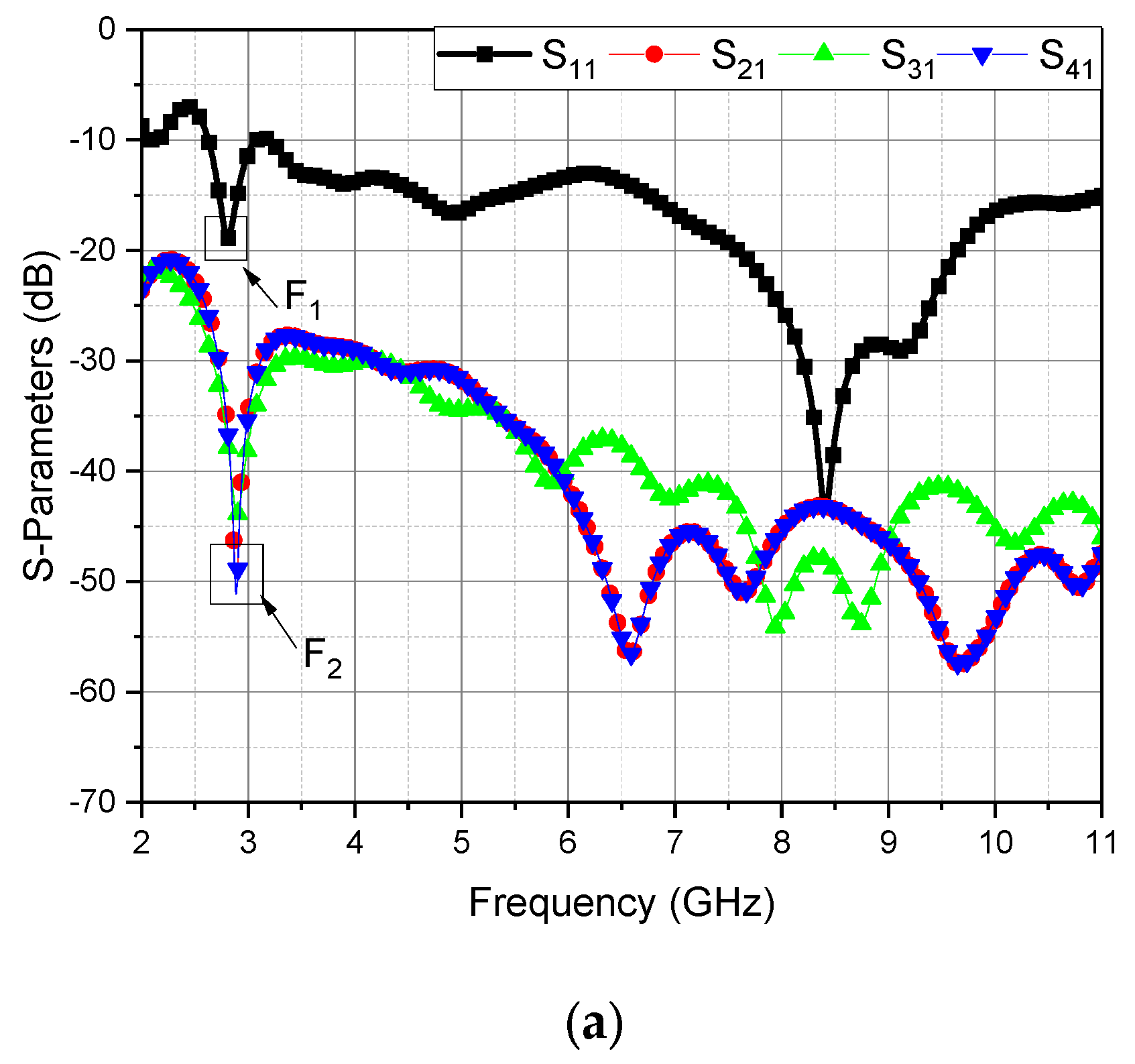
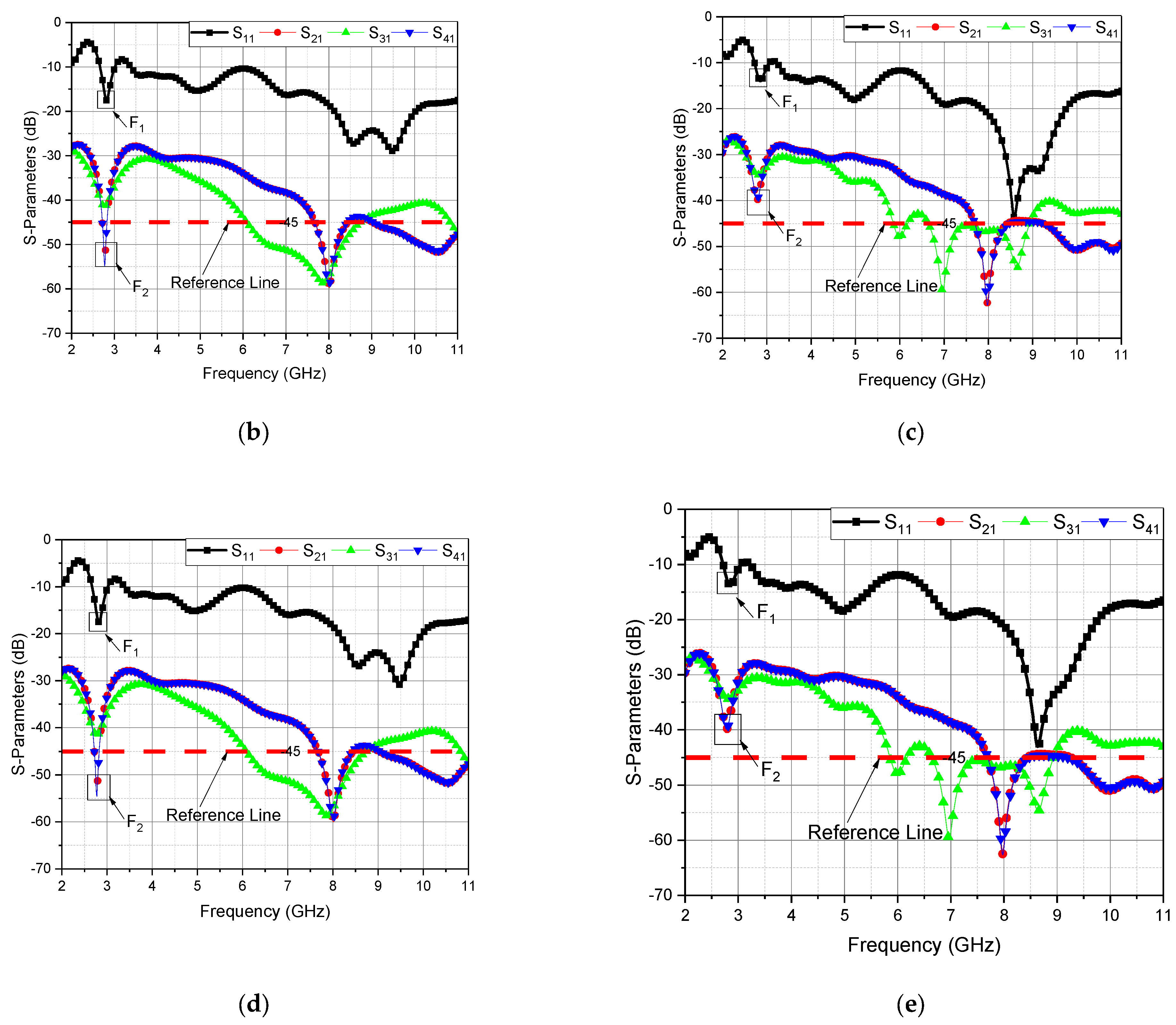
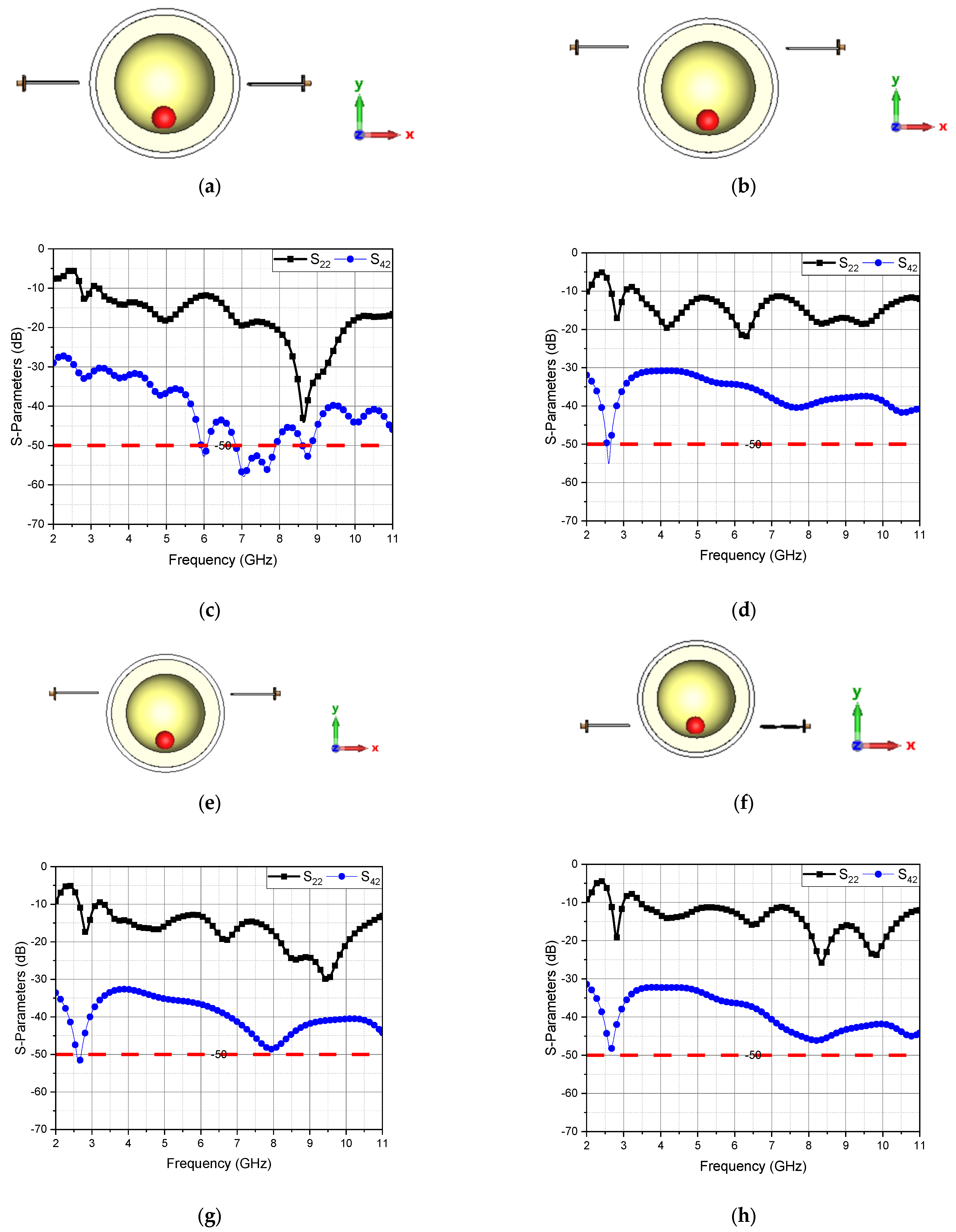
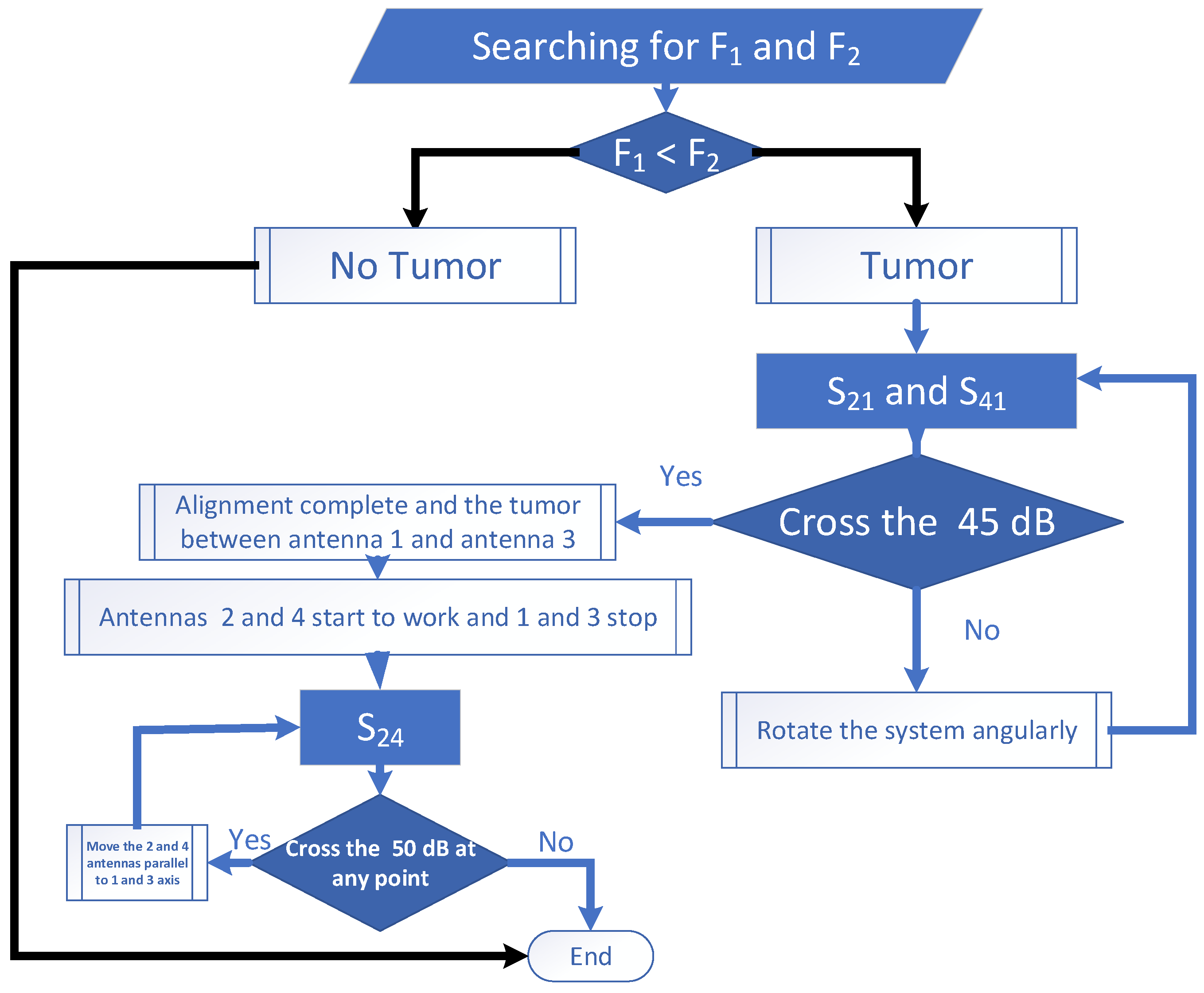

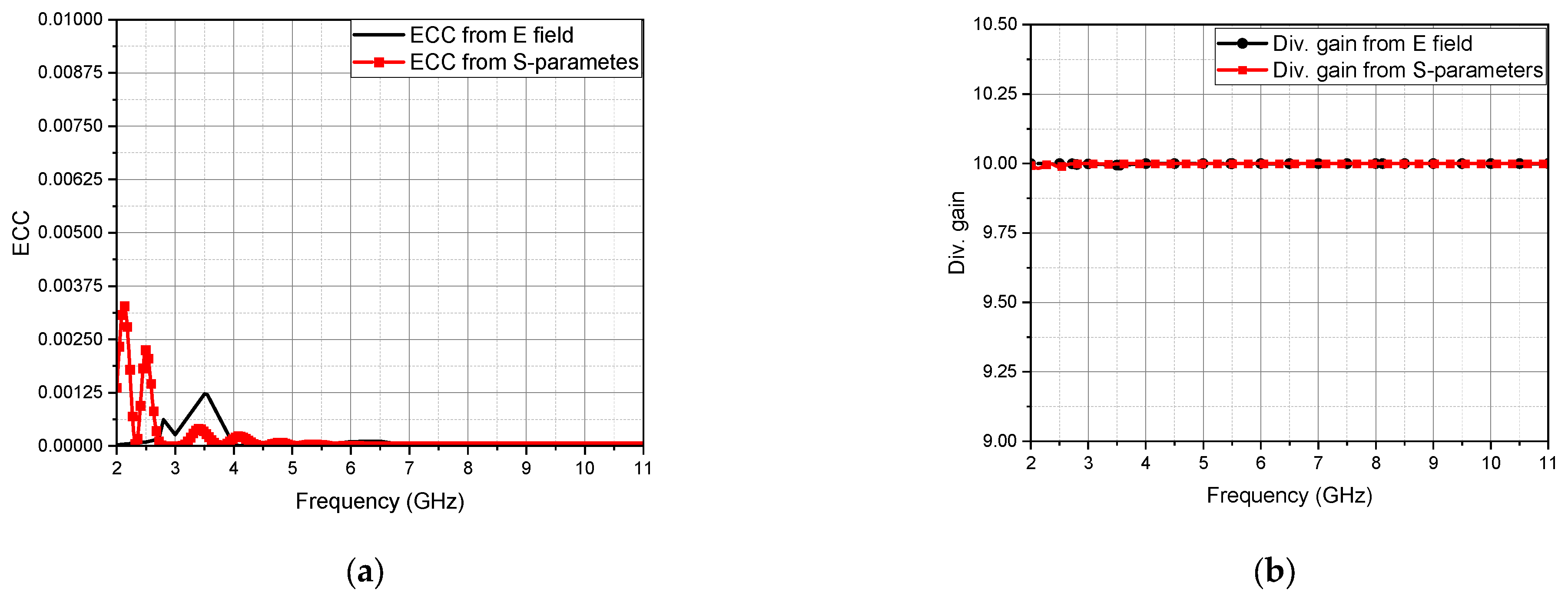
| Ref. | BW (GHz) | ||||||
|---|---|---|---|---|---|---|---|
| [6] | 0.1 | 0.250 | 2–5 | 0.86 | |||
| [7] | 0.1 | 0.280 | 2–4 | 0.67 | |||
| [8] | 0.1 | 0.280 | 2–4 | 0.67 | |||
| [9] | 2.2 | 0.470 | 1.45–1.54 | 0.06 | |||
| [10] | 1.6 | 0.740 | 1.6–11.2 | 1.5 | |||
| [11] | 0.05 | 0.410 | 2–4 | 0.67 | |||
| [12] | 0.16 | 0.730 | 2–4 | 0.67 | |||
| [13] | 1 | 4.4 | 1 | 0.23 | 5.6–5.88 | 0.05 | |
| [14] | 1 | 4.3 | 1.6 | 0.62 | 1.86–17.77 | 4.6 | |
| [15] | 1 | 1.4 | 2 | 2.4 | 2–8 | 2.4 | |
| [16] | 1 | 4.4 | 1.588 | 0.73 | - | - | |
| [17] | 16 | 3.38 | 0.813 | 0.39 | 2–5 | 1.36 | |
| This work | 1.524 | 0.405 | 2.57–12.6 | 3.53 |
| 30 | ||||||
| 42.85 | 17 | 7 |
| Step 1 | Step 2 | Step 3 | Step 4 | ||
|---|---|---|---|---|---|
| Antenna Shape |  |  | 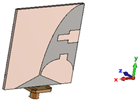 | 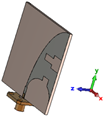 | |
| Resonant Frequencies (GHz) | 2 | 3.19 | 2.72 | 2.84 | |
| 5.7 | 5.27 | 3.55 | 3.87 | ||
| - | 7.37 | 5.48 | 5.83 | ||
| 9.55 | 8.7 | 8.12 | 8.24 | ||
| Bandwidth (GHz) | 1.68–2.5, 8.9–10.2 | 2.8–3.9, 4.54–11 | 2.4–10.6 | 2.57–12.6 | |
| Gain (dBi) | 3.7 | 7.06 | 4.74 | 5.49 | |
| 11.8 | 11.8 | 9.04 | 9.87 | ||
| - | 13.3 | 11.14 | 11.9 | ||
| 12.4 | 14.55 | 14.5 | 14.7 | ||
| Directivity (dBi) | 4.14 | 7.47 | 6.8 | 7.3 | |
| 12.2 | 12.34 | 9.48 | 10.3 | ||
| - | 14.1 | 11.7 | 12.3 | ||
| 13.3 | 15.6 | 15.5 | 15.4 | ||
| 3 dB BW (degree) of XY Plane | 80.9 | 76.7 | 62.6 | 67.5 | |
| 68.3 | 76.8 | 76 | |||
| 58.7 | 51.7 | 87.6 | 79.2 | ||
| 70.2 | 46.8 | 43 | 43.3 | ||
| Radiation Efficiency (%) | 90.43 | 91 | 62.17 | 65.9 | |
| 90 | 88.9 | 90.37 | 91.3 | ||
| - | 83.9 | 88.52 | 89.6 | ||
| 80.9 | 79.3 | 80.53 | 85.4 | ||
| Total Efficiency (%) | 85.7 | 90.12 | 61.89 | 65.8 | |
| 81.7 | 88.4 | 90.19 | 90.2 | ||
| - | 83.8 | 88.47 | 89.6 | ||
| 80.8 | 79.3 | 80.37 | 85.4 | ||
| XY—Plane | 1st Resonant Frequency | 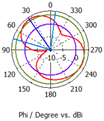 | 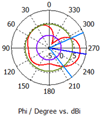 |  |  |
| 2nd Resonant Frequency |  | 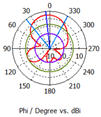 |  | 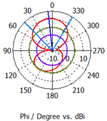 | |
| 3rd Resonant Frequency | - | 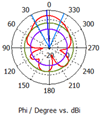 | 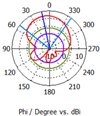 |  | |
| 4th Resonant Frequency | 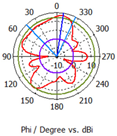 | 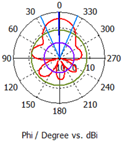 | 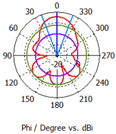 |  | |
| YZ—Plane | 1st Resonant Frequency |  | 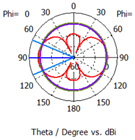 | 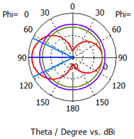 | 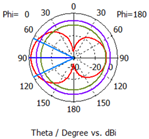 |
| 2nd Resonant Frequency | 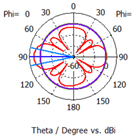 | 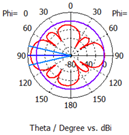 |  | 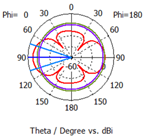 | |
| 3rd Resonant Frequency | - |  | 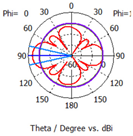 | 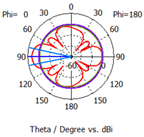 | |
| 4th Resonant Frequency | 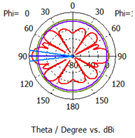 | 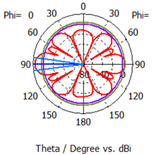 |  |  | |
| 3D | 1st Resonant Frequency |  |  |  |  |
| 2nd Resonant Frequency |  | 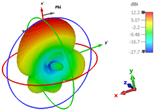 |  | 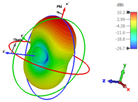 | |
| 3rd Resonant Frequency | - | 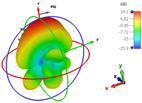 | 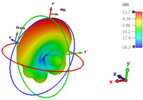 | 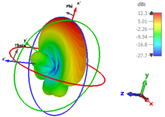 | |
| 4th Resonant Frequency |  |  |  | 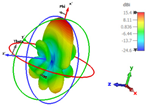 | |
| Tissues | |||
|---|---|---|---|
| Skin | |||
| Fat | |||
| Glandular |
| Tissues | Dielectric Properties | 𝜌 (kg/m3) | 𝑐𝑝 (J/K/kg) | 𝑘 (W/K/m) | |
|---|---|---|---|---|---|
| Skin | 36 | 4 | 1085 | 3765 | 0.4 |
| Fat | 9 | 0.4 | 1069 | 2279 | 0.3 |
| Glandular | 11–15 | 0.4–0.5 | 1050 | 3600 | 0.5 |
| Tumor | 50 | 4 | 1050 | 3600 | 0.5 |
| No Tumor | Tumor Positions | ||||
|---|---|---|---|---|---|
| P1 | P2 | P3 | P4 | ||
| S11 (dB @ GHz) | 18.8 @ 2.8 | 17.47 @ 2.82 | 15 @ 2.83 | 17.55 @ 2.82 | 13.7 @ 2.83 |
| S21 (dB) | 48.8 @ 2.9 | 54.56 @ 2.78 | 40 @ 2.78 | 54.8 @ 2.78 | 40 @ 2.78 |
| S31 (dB) | 43.8 @ 2.9 | 41.5 @ 2.78 | 35 @ 2.78 | 41.5 @ 2.78 | 35 @ 2.78 |
| S41 (dB) | 48.8 @ 2.9 | 54.56 @ 2.78 | 40 @ 2.78 | 54.8 @ 2.78 | 40 @ 2.78 |
Disclaimer/Publisher’s Note: The statements, opinions and data contained in all publications are solely those of the individual author(s) and contributor(s) and not of MDPI and/or the editor(s). MDPI and/or the editor(s) disclaim responsibility for any injury to people or property resulting from any ideas, methods, instructions or products referred to in the content. |
© 2023 by the authors. Licensee MDPI, Basel, Switzerland. This article is an open access article distributed under the terms and conditions of the Creative Commons Attribution (CC BY) license (https://creativecommons.org/licenses/by/4.0/).
Share and Cite
Abouelnaga, T.G.; Hamad, E.K.I.; Khaleel, S.A.; Beiranvand, B. Defining Breast Tumor Location Using a Four-Element Wearable Circular UWB MIMO Antenna Array. Appl. Sci. 2023, 13, 8067. https://doi.org/10.3390/app13148067
Abouelnaga TG, Hamad EKI, Khaleel SA, Beiranvand B. Defining Breast Tumor Location Using a Four-Element Wearable Circular UWB MIMO Antenna Array. Applied Sciences. 2023; 13(14):8067. https://doi.org/10.3390/app13148067
Chicago/Turabian StyleAbouelnaga, Tamer G., Ehab K. I. Hamad, Sherif A. Khaleel, and Behrokh Beiranvand. 2023. "Defining Breast Tumor Location Using a Four-Element Wearable Circular UWB MIMO Antenna Array" Applied Sciences 13, no. 14: 8067. https://doi.org/10.3390/app13148067
APA StyleAbouelnaga, T. G., Hamad, E. K. I., Khaleel, S. A., & Beiranvand, B. (2023). Defining Breast Tumor Location Using a Four-Element Wearable Circular UWB MIMO Antenna Array. Applied Sciences, 13(14), 8067. https://doi.org/10.3390/app13148067








